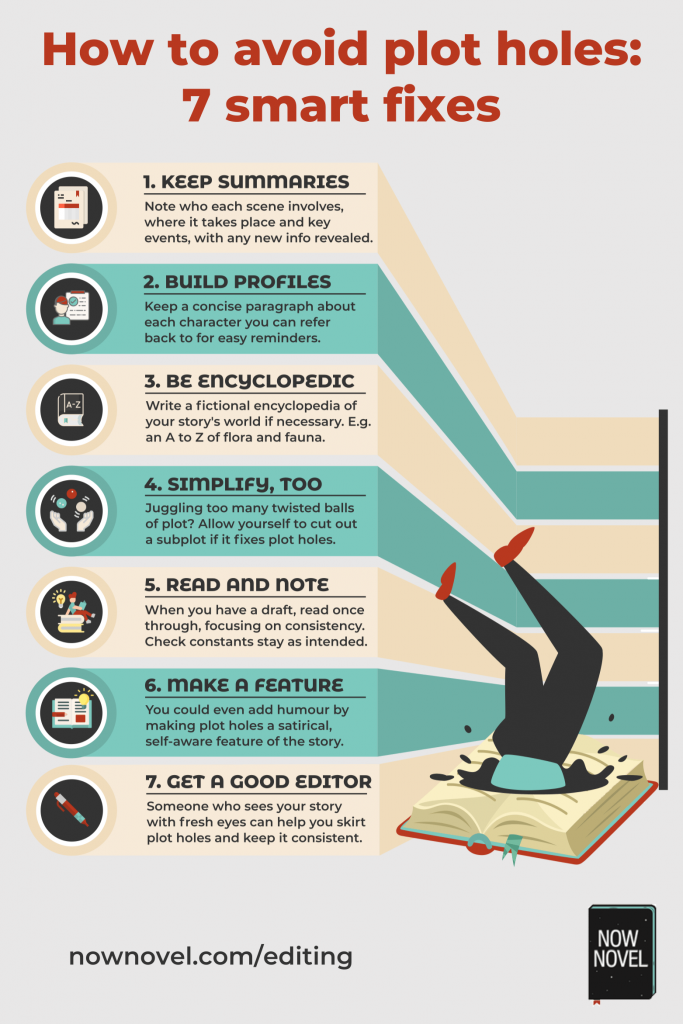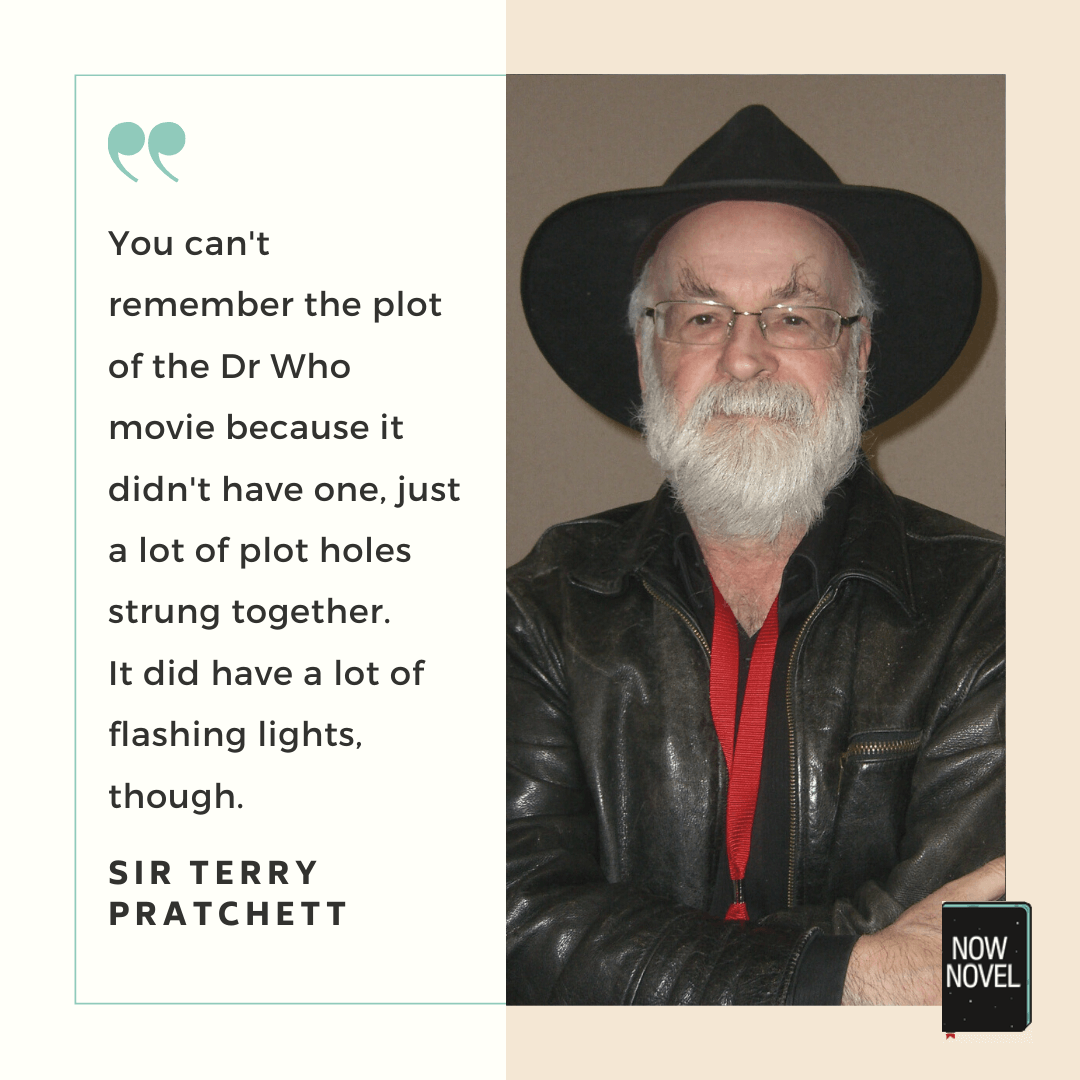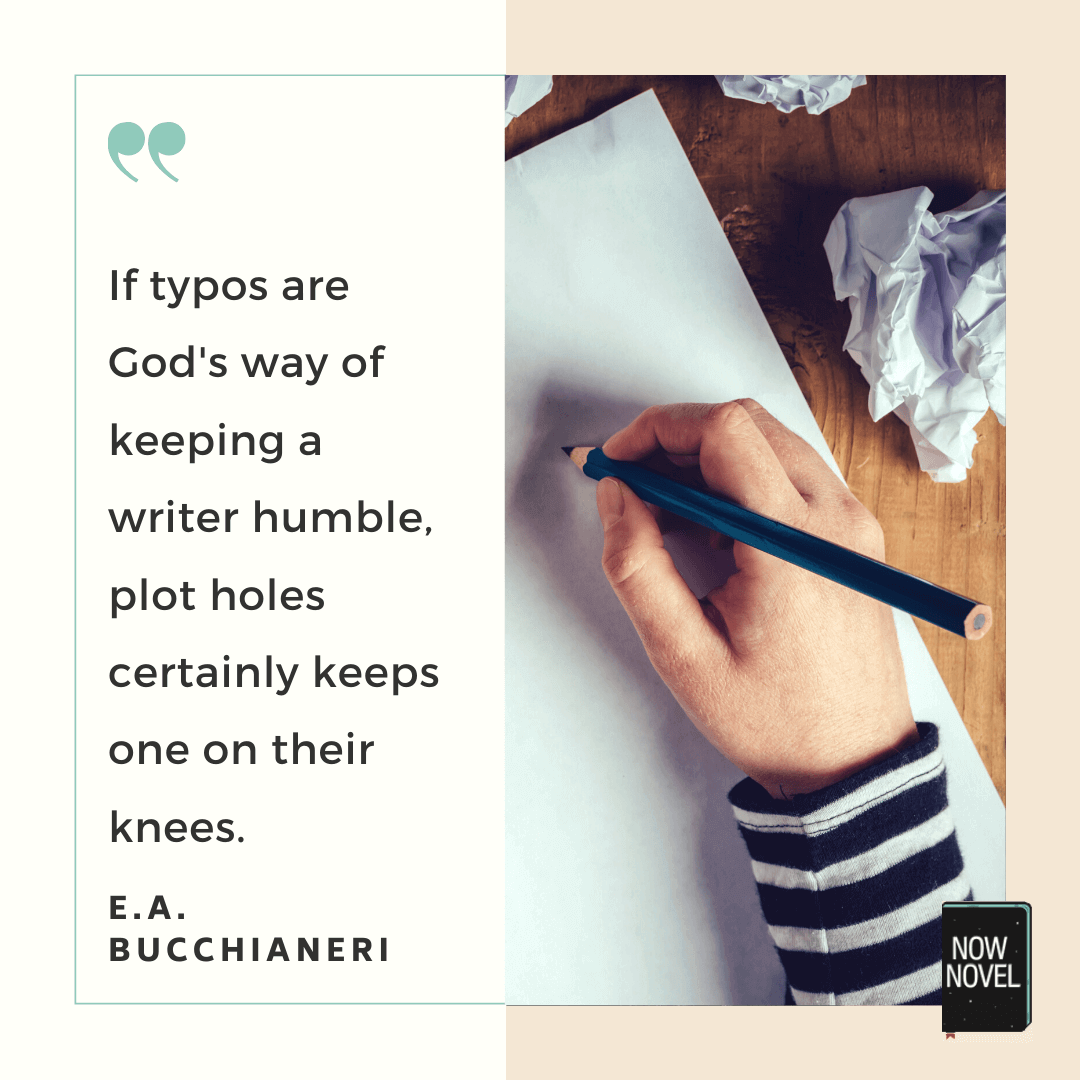A plot hole, like a glaring grammar or typographical error, takes your reader out of the story. Read definitions of types of plot holes, plus 7 tips to avoid and fix them:
What is a plot hole?
A plot hole in a novel, film, play or other story medium is a gap (as the word 'hole' implies) in the way the story's threads weave together.
A plot hole may be caused by errors of:
- Consistency: For example, character Joe's mother dies of heartbreak in chapter 1, but by chapter 12 the cause has become an albatross attack
- Continuity: E.g. A character has left their home town in Chapter 1, yet later events occur that would require them to still be in their home town for the events to be possible
- Contradiction: E.g. The author sets up a world that has particularly low gravity than shows a scene that would only be possible with Earth-like gravity
TV Tropes has a good article here further explaining types of plot holes and why they occur.
So how do you avoid and fix plot holes?
1. Keep a scene-by-scene summary
You may be sick of the 'plotter vs pantser' debate. Whether it is better to outline your story in full, or write 'by the seat of your pants', not knowing in advance where your pen/keyboard will lead.
Regardless of which method you prefer, having a brief scene-by-scene summary outlining what happens in each part of your story (and which characters are involved) is one way to avoid a big plot hole.
Even if you didn't start drafting with a scene summary, you can still create one.
Stop where you are now and read through from the start of your draft, writing a two-line summary for each scene. Include:
- Where each scene takes place
- Which characters the scene involves
- Key events that occur in each scene
- Any new information or revelations
For example, you could summarize the first scene of Michael Ondaatje's novel Warlight thus:
In 1945 in London, Nathaniel and his sister Rachel are left in the care of two men who may be criminals by their parents when they leave for Singapore for a year because their father is promoted to take over the Unilever office in Asia.
[Brainstorm concise scene summaries that are added automatically to your outline in Now Novel's Scene Builder.]

2. Build character profiles
Developing detailed character profiles is another way to avoid plot holes.
A concise summary for each character will help you remember who has what backstory, what goals, motivations, physical attributes and other details.
Whenever you come up with a new character in the moment, make a note to develop a profile for them if you don't want to break the flow of drafting the current scene.
3. Create an encyclopedia of your world
Certain genres, such as fantasy and sci-fi, are particularly prone to plot holes due to the world building involved.
One way around the pitfall of plot holes is to develop your own world encyclopedia.
For each invented location, write a brief list of key places within said location.
In Google Docs, use header formatting and the outline tool to create a document you can easily search by name or term.
Whenever you are writing a chapter set in a specific location, all you then need to do is read over your summary of what you've introduced about this specific story element so far.

4. Don't be afraid to simplify
Often plot holes happen because we're juggling too many plot points in the air.
Protagonist has objective. Sidekick has their own, plus there's a subplot involving their brother's girlfriend's mother's uncle (you get the idea!)
Complication and digression is part of what makes a story interesting, its events unexpected. Yet don't be afraid to trim a subplot here, a side character's arc there, if this will help to untangle overwrought events.
5. Read through and take notes
Being a good editor means being a good reader. An observant reader. If your manuscript has run into a plot hole dead-end, stop and read from the start.
As you read, ask:
- Are the events of this chapter logical (can I explain why each event occurs in relation to prior or impending events?)
- Is there anything elsewhere in the story that contradicts this scene and makes its events confusing?
- Do the unchangeable facts about each character remain constant (E.g. backstory and past choices, information they have access to (and information they don't)?
6. Incorporate plot holes into your story's events
One alternate way to approach a plot hole is to make it an intentional part of your story.
This is a common device in genres such as satire. In the sci-fi satire animation series Futurama, for example, the protagonist Philip J. Fry travels back in time and accidentally runs over his own grandfather. Fry realizes that in order to still exist back in the future he has to become his own grandfather.
This is an outlandish example of how a plot hole can be used to generate further ideas and surprising twists for your story.

7. Work with a good editor
If finding each plot hole is something you don't enjoy, and you prefer focusing on the broader story, enlist the help of a good editor.
In a manuscript evaluation, you'll get feedback on elements of story such as plot, character, style, SPAG and more with improvement suggestions in one convenient, structured document.
Get an obligation-free quote for editing now.










This article has been so helpful. Thank you. I'm a "first timer", and have a lot of idea, and have followed a lot of what you've said already. Thanks for your help.
Pearl Barfield - About 5 years ago
It's a pleasure, Pearl. I'm glad to hear you're making progress!
Jordan - About 5 years ago
Oh my god, this is helping me so much right now! I'm having writer's block, and it is so hard to find out what's wrong. Thanks to your website, I have started to develop a concept for my story. And I think this article here is a turning point for me, because I feared that I may have to write it all over again (a third time!). Thank you so, so much!
Dana - Over 4 years ago
Hi Dana, you're welcome! That's great to hear, 'third time's the charm', as the saying goes. You may find our article here on methods to overcome writer's block helpful, too. Feel free to get feedback in our online writing groups or chat with us there, I'm sure the community would help.
Jordan - Over 4 years ago